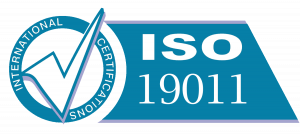Environmental management has become a priority to comply with regulations and to improve sustainability and operational efficiency. Companies that adopt environmentally responsible practices contribute to the conservation of the planet and experience a positive impact on their productivity and profitability.
Technological progress has enabled the development of innovative tools such as environmental management software that stand out for their ability to automate processes and provide valuable data for decision making. On the other hand, not all environmental management software solutions provide what is necessary to achieve the critical regulatory compliance and sustainability objectives.
Here we share with you the seven (7) key requirements that you should take into account when evaluating an environmental management software solution.
- Process automation
This type of software reduces manual workload by eliminating the use of paper, minimizing human error and improving data gathering and operational efficiency.
By automating data capture, processing and analysis, you ensure that information is accurate, reliable and consistent, facilitating ongoing compliance with legal requirements, environmental aspects and impacts.
In addition, environmental management software integrates various sources of information into a centralized platform, enabling faster and continuous data analysis. This enables your company to respond quickly to emerging environmental issues and adjust your strategies or activities proactively.
- Compliance with rules and regulations
Environmental management software is specifically designed to help companies keep up with the legal requirements and obligations. The management of environmental and operational permits and licenses is a critical component of any environmental management software.
Complying with the ISO-14001 standard can be complex due to its multiple documentation requirements and detailed change controls for operation-specific aspects and impacts. A software tool facilitates these documentation control by automating the tracking of activities related to ongoing compliance requirements, generating required reports, and maintaining up-to-date and accessible records.
In addition, it provides automatic notifications of changes in regulations, ensuring that the company always operates in accordance with the latest laws and facilitates the updates of legal requirements, aspects and impacts. Nonetheless, compliance with environmental regulations through the software avoids potential fines and penalties for non-compliance.
- The decision making process is optimized
Environmental management software must provide accurate, near real-time data, significantly improving this management process.
With access to detailed, up-to-date information on environmental performance, managers can quickly identify problem areas and opportunities for improvement.
This includes, for example, emissions targets or limits or resource utilization and consumption metrics. The ability to analyze these metrics reliably and continuously allows companies to make decisions based on empirical evidence rather than assumptions.
- Reduced operating costs
By automating and optimizing processes related to ongoing management, many of the manual and repetitive tasks that consume time and human resources are eliminated.
In addition, environmental management software can identify areas of waste and over-consumption of resources such as energy and water.
By obtaining detailed data on the use of these resources, your company can implement specific cost-saving measures, thereby reducing operating costs. For example, optimizing energy use reduces electricity costs and contributes to a smaller carbon footprint.
- Improve corporate responsibility
Corporate responsibility is an essential component of any company’s reputation and long-term sustainability. Environmental management software can play a crucial role in improving this factor by providing the empirical data to demonstrate environmental performance.
Implementing such software improves a company’s public image and strengthens relationships with customers, investors and other stakeholders who value responsible business practices. A well implemented software solution will enable companies to transparently monitor and report their environmental performance, critical for corporate Environmental, Social & Governance (ESG) reporting.
- Fostering a culture of data and compliance
Software facilitates employee education and awareness of the importance of environmental compliance and best practices on how to gather and manage data on a daily basis.
By providing access to standardized procedures, digitized forms and workflows, you ensure that everyone in the organization is using the software system daily to do their job. The software solution must provide an optimized user experience and tangible benefits for the user, such as time savings and ease of use as an incentive for daily use.
Ultimately, the daily use of the software strengthens employees’ commitment to sustainable environmental management, creating a culture of data collection in support of the continues environmental management and compliance.
- Increased competitiveness
By adopting sustainable practices such as the use of environmental software, your company can attract customers and business partners who value your environmental commitment.
Furthermore, the adoption of international standards such as ISO 14001 is now necessary for entry into international export markets for many companies looking to grow outside their national market.
A strong environmental management track record can be a decisive factor in winning contracts and tenders, especially in industries where sustainability and ESG performance is an increasingly important requirement.
In addition, the use of environmental management software can improve operational efficiency, enabling companies to offer products and services at more competitive prices. Implementing environmental management software is an investment in your organization’s sustainability and long-term competitiveness.
In conclusion, whichever software solution you evaluate, make sure that these seven (7) key requirements are demonstrably met.
Ready to take your environmental management to the next level?
Request a demo of EHS Tracker’s environmental management software today and find out how we can help you digitally transform your business.






